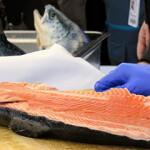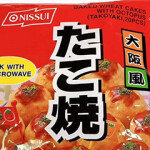Polish processors hope to steal back US business from China

Polish seafood processors are seeking opportunities for cooperation with the U.S. seafood industry, in a project that aims to open up new avenues for business in whitefish and flatfish processing.
Polish Association of Fish Processors Vice President Jarosław Zielinski, who also cooperates with the Alaska Seafood Marketing Institute (ASMI) to promote Alaskan seafood in Poland, told SeafoodSource that he had received great feedback following a presentation at the National Fisheries Institute (NFI) Global Seafood Market Conference in Orlando, Florida, in January 2020.
“I was all set to take our processors to Seafood Expo North America in Boston in March, and to receive a high-level U.S. delegation from the NFI in Poland, before COVID-19 put a temporary hold on travel. However, it’s a short-term hiccup, and I am keen to pick up the thread again as soon as ‘normal’ service is resumed," he said. "I want to reposition my country as a major European player in the industry processing raw material from the north Pacific."
During his time in the U.S., Zielinski found that American processors knew little about Poland as a trading nation, or the processing capabilities it has.
“People seemed genuinely surprised to find that we are the biggest processor of Norwegian salmon in the world, and that with the U.K. out of the E.U., we are now the third-largest seafood processor after France and Spain,” he said.
Zielinski explained that Poland once had a large frozen-at-sea (FAS) fishing fleet, but since the late 1990s, when the Polish pollock fishery in the Bering Sea was closed, the country has become a significant seafood importer, bringing in more than 1 million metric tons (MT) of raw material each year.
“We continuously import pollock, but also cod and pelagic fish from Iceland and Norway, while salmon makes up around one-third of the total. In our processing plants, we are able to use the skills of the people who formerly worked in the FAS industry. We have a lot of know-how and technology, as well as the mentality and experience,” he said.
According to Zielinski, one big advantage of using Polish processors is the fact that they are already used to working with refreshed (thawed) material and know how to maintain its quality, whereas other E.U. countries tend to specialise in processing fresh seafood.
“I see great potential for processing more Alaska pollack in Poland, as well as rockfish and Pacific cod, which would be a good alternative for Baltic cod. This could be returned to the U.S., and also targeted to open up the E.U. market. In France, it would be a matter of reintroducing Pacific cod and wild salmon, which were popular there in the 1990s, before they were pushed out by cheaper Atlantic cod and Norwegian salmon. Now the price is comparable again, so the opportunity is there,” he said.
Traditionally, U.S. seafood imports go through major ports in the Netherlands or Germany, but Zielinski explained that the Polish port of Gdansk would be an equally practical choice.
In reaching out for business partners, joint ventures, and collaborations, Zielinski stressed that Poland is economically stable and offers a range of attractive tax and business incentives, as well as grants for job creation. The country also has excellent trade links throughout the E.U.
“The Polish fish processing sector employs over 27,000 people. We have more than 250 processing facilities authorized to trade within the E.U., and 68 authorized for export to third countries. If U.S. companies are considering alternatives to processing in China, where processing costs have risen and trade and tariff disputes are ongoing, then Poland deserves more than a passing consideration,” he said.
Zielinski is confident of overcoming minor barriers to trade, and has the backing of the Polish fisheries ministry. For example, Poland, as part of the E.U., depends on the autonomous tariff quota (ATQ) system for some of its raw material imports. This allows imports from third countries at either reduced or suspended import duties. At present, there is only a very small ATQ for fillets of U.S. west coast flatfish, and none at all for headed and gutted or whole-round fish.
"We are working closely with our administration on this, and hope to see an increase in some of the ATQs soon,” said Zielinski.
New E.U. regulation on the ATQ system is due to be approved by the E.U. Council in the fall of 2020, he added.
“And with the US and Poland now close allies, the time is right for bilateral cooperation between our seafood sectors. I believe we can do some very successful business,” Zielinski said.
Photo courtesy of Jaroslaw Zielinski






Share